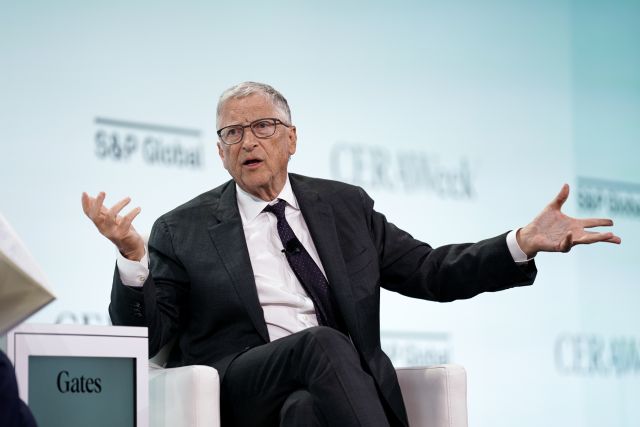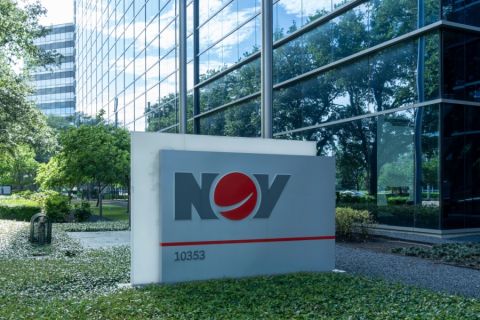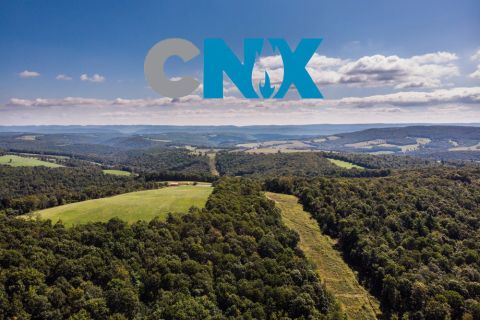
Microsoft Corp. co-founder Bill Gates called it ironic that Texas, a state known for its oil and gas industry, has the capabilities to support renewables projects well. (Source: CERAWeek by S&P Global)
Bill Gates, founder of Breakthrough Energy and TerraPower, said the energy transition is starting to move along, but that the climate goals established under the Paris Agreement of 2015 will still not be achieved.

“There's a lot of exciting technology and a lot of the big companies are coming in. We saw at COP28 the participation of the big companies from all the industries—electricity, oil and gas—was very strong,” Gates said March 21 during CERAWeek by S&P Global.
The 2015 Paris Agreement is a legally binding international treaty on climate change to pursue efforts to limit a global temperature increase to 1.5 C above pre-industrial levels, according to the United Nations website.
“And so given the pace before of how much these things were changing, I think we're seeing that it's changing faster and we have good policy. That still probably won't achieve the most ambitious goals, which is to limit warming to 1.5 C or 2 C,” Gates said.
Gates, who dropped out of college to start Microsoft with his childhood friend Paul Allen, said the energy transition was very complicated.
“A heroic effort is beginning. I'm very excited about it, but we shouldn't underestimate how incredibly difficult it will be,” Gates said, adding a lot of things had to happen for projects like a hydrogen hub to go forward.
Part of being able to hit ambitious goals starts with cooling the conversation surrounding the energy transition with scientific facts, Gates said.
“Some people think you can change consumption. I mean, the number of unusual views and often sort of non-numeric views in this space—it just comes with the territory obviously,” Gates said. “Just look at the IEA (International Energy Agency) numbers. This is a hydrocarbon driven economy across all these areas of emissions, and the amount that we've dented that is rather modest, despite installing solar at a very, very good clip. As a percentage, it's still very, very small. EVs are very small. [And solar and EVs] are the most mature parts of this entire picture.”
Gates also said the price of electricity was a big issue.
“Where is direct air capture going to go? It's going to go where electricity is cheap. Where are these new steel plants that do the reduction using electricity, where are they going to go? It's going to go where electricity is cheap. Where is green hydrogen going to be made? It'll be made where electricity is cheap and a lot of the downstream things like ammonia. Why take the hydrogen a long distance? So, the price of electricity will be a very big deal.”
Texas: an energy transition state
Gates also noted the irony of Texas’ growing number of renewables projects for a state known for its oil and gas.
“There [is] some irony in the fact that so many of the capabilities to embrace these new innovations are strongest here in Texas, whether it's the workforce, the permitting,” Gates told the lunch crowd at CERAWeek. “There's really a strong critical mass here of the big industry players and a lot of the policies that allow things to move quickly.”
Gates, co-chair of the Bill & Melinda Gates Foundation with Melinda French Gates, took the time while in Texas to visit a number of cities, including Corpus Christi. Gates visited with a number of companies to learn about energy related projects, including the Infinium plant, the world's first e-fuel plant using hydrogen and CO2 to make fuels. Infinium is working on next-generation clean fuels for trucks, ships and airplanes.
Gates also visited with Occidental Petroleum and its subsidiary 1PointFive, which use carbon for enhanced oil recovery and carbon capture and sequestration. Gates also visited a ranch near Kingsville, Texas, which will be the site of a lot of 1PointFive’s sequestration.
Finally, Gates spent time at a Shell Technology site and at an Air Liquide hydrogen site using carbon sequestration in La Porte, Texas. The Paris-based company’s plant uses steam methane reforming to generate hydrogen fuel for the industry, and it will be retrofitted in the coming years to eliminate its emissions, Gates wrote March 20 in a blog post titled: GatesNotes.
“If you want to see what the cutting edge of next-gen clean energy innovation looks like, it’d be hard to find a place better than Texas,” Gates said in the blog. “Amazing companies are breaking ground not just here in Southeast Texas but across the state. Each one represents a huge boon for the local economy, America’s energy security and the fight against climate change.”
Recommended Reading
NOV Announces $1B Repurchase Program, Ups Dividend
2024-04-26 - NOV expects to increase its quarterly cash dividend on its common stock by 50% to $0.075 per share from $0.05 per share.
Repsol to Drop Marcellus Rig in June
2024-04-26 - Spain’s Repsol plans to drop its Marcellus Shale rig in June and reduce capex in the play due to the current U.S. gas price environment, CEO Josu Jon Imaz told analysts during a quarterly webcast.
US Drillers Cut Most Oil Rigs in a Week Since November
2024-04-26 - The number of oil rigs fell by five to 506 this week, while gas rigs fell by one to 105, their lowest since December 2021.
CNX, Appalachia Peers Defer Completions as NatGas Prices Languish
2024-04-25 - Henry Hub blues: CNX Resources and other Appalachia producers are slashing production and deferring well completions as natural gas spot prices hover near record lows.
Chevron’s Tengiz Oil Field Operations Start Up in Kazakhstan
2024-04-25 - The final phase of Chevron’s project will produce about 260,000 bbl/d.





